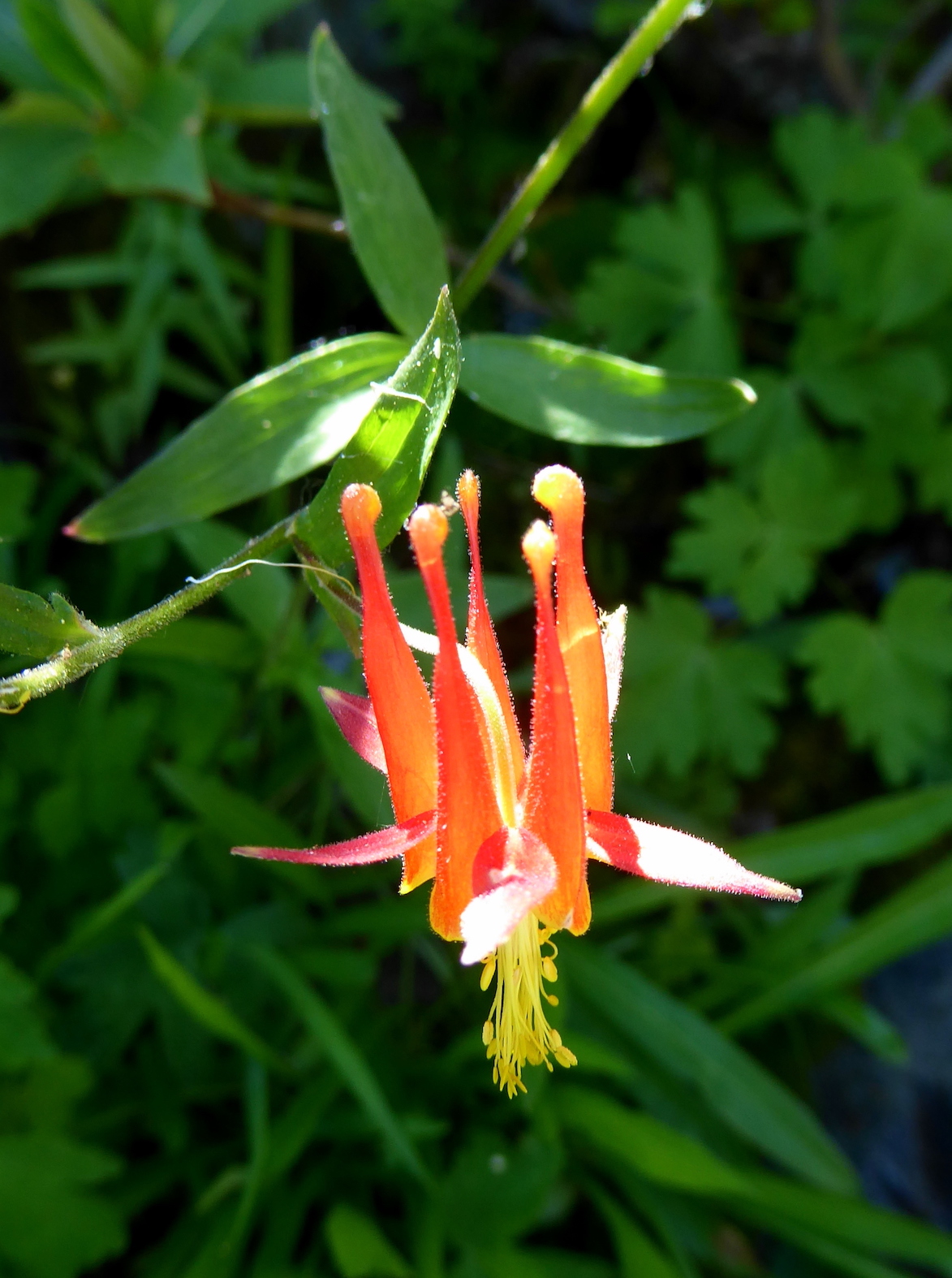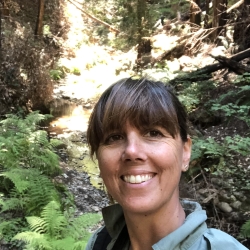BIOL 315: Flora of the Northern Sierra Nevada
Dates: June 16-21, 2024
Instructor: Tanya Baxter
Fee: $395.00
Units: 1
Term: Summer 2024
Class Number: 1963 Section Number: 01Z
Course Description
Note: This class is intended for undergraduate students and community college students that have taken some plant taxonomy coursework and seeking CSU credit. Please click the link for our introductory flora course geared toward the general public.
"All that the sun shines on is beautiful, so long as it is wild." John Muir
Students will learn to recognize characteristics of flowering plants, some conifers and hardwoods. Morphological terms, recognizing patterns, drawing, and practice with taxonomic keys for different learning styles will all be utilized. Participants will develop their own guide to learning their Sierra plants and those with little to some plant ID experience are welcome. Plan for day hikes to nearby Sierra Buttes and surrounding areas (~1200 ft elevation gain). Hikes are moderate level and high elevation. Those hoping to prepare for the workshop are encouraged to review basic morphological terms found in the Jepson Manual 2 glossary. ipads with a version of the Jepson Manual downloaded is a lightweight approach (optional). There is no wifi on campus. Students will learn:
• basic plant structure
• principal plant families of the region
• common species of trees and shrubs of the region and how they are aggregated into plant communities
• basic plant ID terminology
• how to identify vascular plants with the aid of a manual
A species list of the Flora of the Sierra Nevada Field Campus.


Instructor Bio
Tanya is a botanist and ecologist. A love for the Sierra, she has surveyed 12,000 acres of post-fire flora for Yosemite National Park and recently surveyed rare serpentine pine forests of Plumas County. Tanya served for the National Park Service for 10 years, much of it as a project manager in restoration ecology. She holds a masters in science from San Francisco State University in Ecology and Evolutionary Biology. A scientist, naturalist and storyteller, she evokes a sense of awe and interconnectedness of botany into the lives of her participants. You may contact Tanya @ tanyabaxter10@gmail.com or learn more at Tanya's Baxter Botanical website.
Course Details
Course Schedule
Mornings start at 8/8:30a.m after breakfast. We review major plant families for the first half of the day and utilize the surrounding botanical hotspots for afternoons. There will be 1 or 2 full day hikes to the region and the stunning sierra buttes. Hikes of 1500ft elevation max at a botanist pace. (Note hiking poles are helpful along with standard sturdy footwear and layers for changing sierra temperatures). Lunch will be on campus on three days and off site for all day field trips. There will be free time prior to dinner to explore the adjacent North Yuba River. Evenings will be set aside for optional open keying sessions. Due to snow melt bloom destinations of field trips are subject to change. Course ends Friday after lunch.
Car pooling: We will be driving short distances to field sites, and this will require some car pooling. The longest distance will be slightly over 50 miles.
Terrain: The sierra buttes area is steep with uneven terrain, please plan for altitude adjustment if coming from lower elevations.
Supplies List
Clothing: Bring good walking shoes. Most days will be gentle with regard to walking, but on Thursday we may hike to the top of the Sierra Buttes. Plan for all kinds of weather. Days should be warm, but evenings can be cool. Bring short pants for warm hikes, and/or long pants for mosquito protection. It frequently rains in the Sierra in late June. Most of all, bring a hat and sunscreen for protection. Old sneakers, rubber boots, or hip-waders may come in handy for marsh prowling.
Hand lens: Everyone must have their own hand lens. There is no place where you can buy a lens near the field station. Amazon sells them, so do many University bookstores. They vary in cost from a few dollars to around $40. They're like wine — the more you pay, in general the better the quality. You'll want at least a 10X and no higher than a 14X. As soon as you buy one, tie a lanyard around it so you won't lose it.
Text: Jepson Manual of California Plants, 2nd edition
Misc: field notebook, 10 cm ruler, tweezers (optional)
Lodging and Camping Supplies
Camping gear if you are staying on campus:
- tent and sleeping pad (unless you are staying in our tent with a cot provided)
- warm sleeping bag
- pillow, toiletries, and towel
- flashlight and lantern
- alarm clock
Field gear for everyone:
- day pack
- sunscreen
- insect repellant
- water bottles
- plastic containers for packed lunches
- sense of humor
You might also want to bring:
- camera
- binoculars
- hand lens
- camp chair
Clothing:
The weather in the Sierra Nevada can vary greatly, even in a single day. Be prepared for chilly temperatures at night, even below freezing early in the summer. Rain is a possibility any time, whether forecast or not. Variable weather clothing that can be layered is best: long pants and a long-sleeved shirt, warm sweater and jacket, t-shirt and shorts or skirt, sturdy shoes or hiking boots, sun hat, rain gear, and a warm hat or gloves for cold weather and/or night activities. And, if you come later in the season, bring your swimsuit for afternoon dips in the lakes!
Adobe Acrobat Reader is required to view PDF files. This is a free program available from the Adobe web
site. Follow the download directions on the Adobe web site to get your copy of Adobe Acrobat Reader.
The documents on this website/webpage might not be fully accessible to persons with disabilities. We are working to
fix these accessibility barriers by the end of the year. If you have trouble in accessing this content, please contact (415) 338-1111 and we will provide you with accessible alternatives.